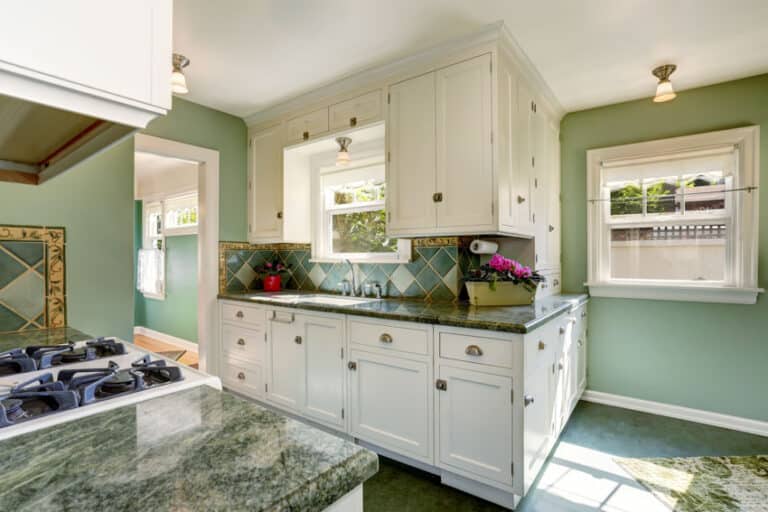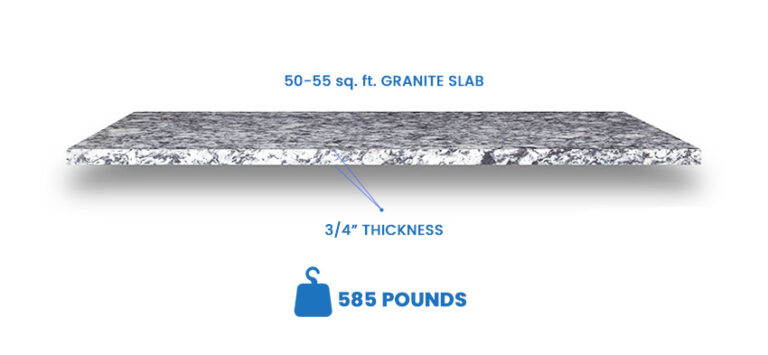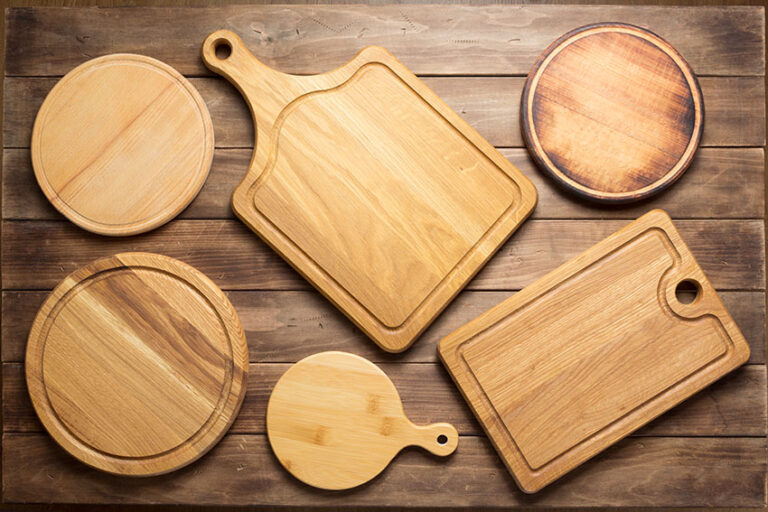Where To Put a Trash Can In the Kitchen (9 Placement Ideas)
Discover where to put a trash can in the kitchen, including the placement, important tips, and the different types to consider for this part of your home.
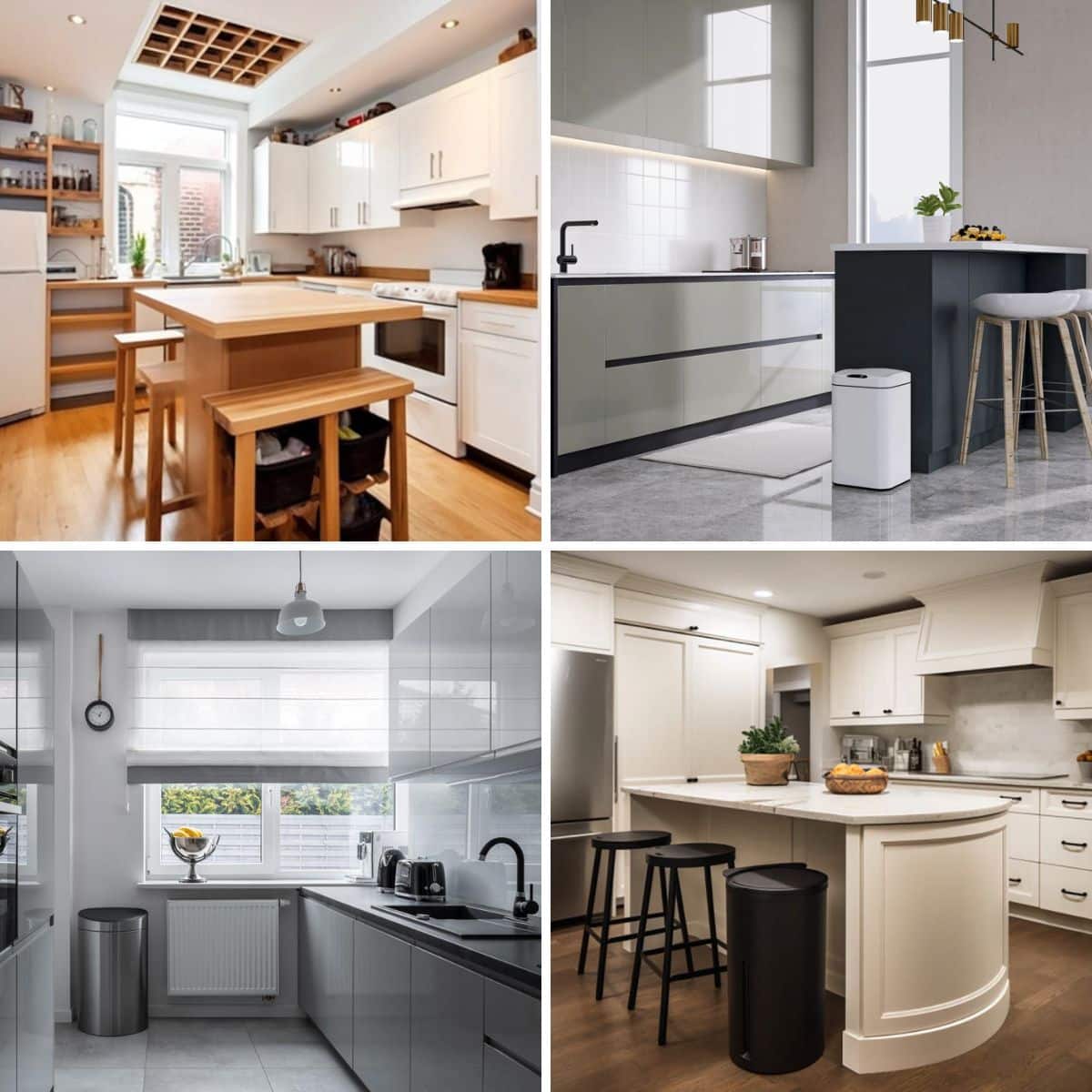
Knowing where to put your trash can in the kitchen before performing a renovation or new build helps you utilize the available space for a more hygienic and efficient space.
However, if you just moved in or currently have a kitchen that does not have a dedicated garbage area, you need to decide the best area to place your trash that fits your household needs.
In this article, we’ll help you find out the best location for your garbage, the size to use, and what type of bin to choose.
Trash Can in the Kitchen Placement Ideas

Whatever kitchen style or size you have, a well-maintained garbage system is essential to maintaining the health of your household and your convenience. Not to mention, messy garbage is an eyesore, considering the kitchen is a gathering hub for family members and guests. So, where do you put your trash can in the kitchen?
Inside a built-in cabinet dedicated to trash
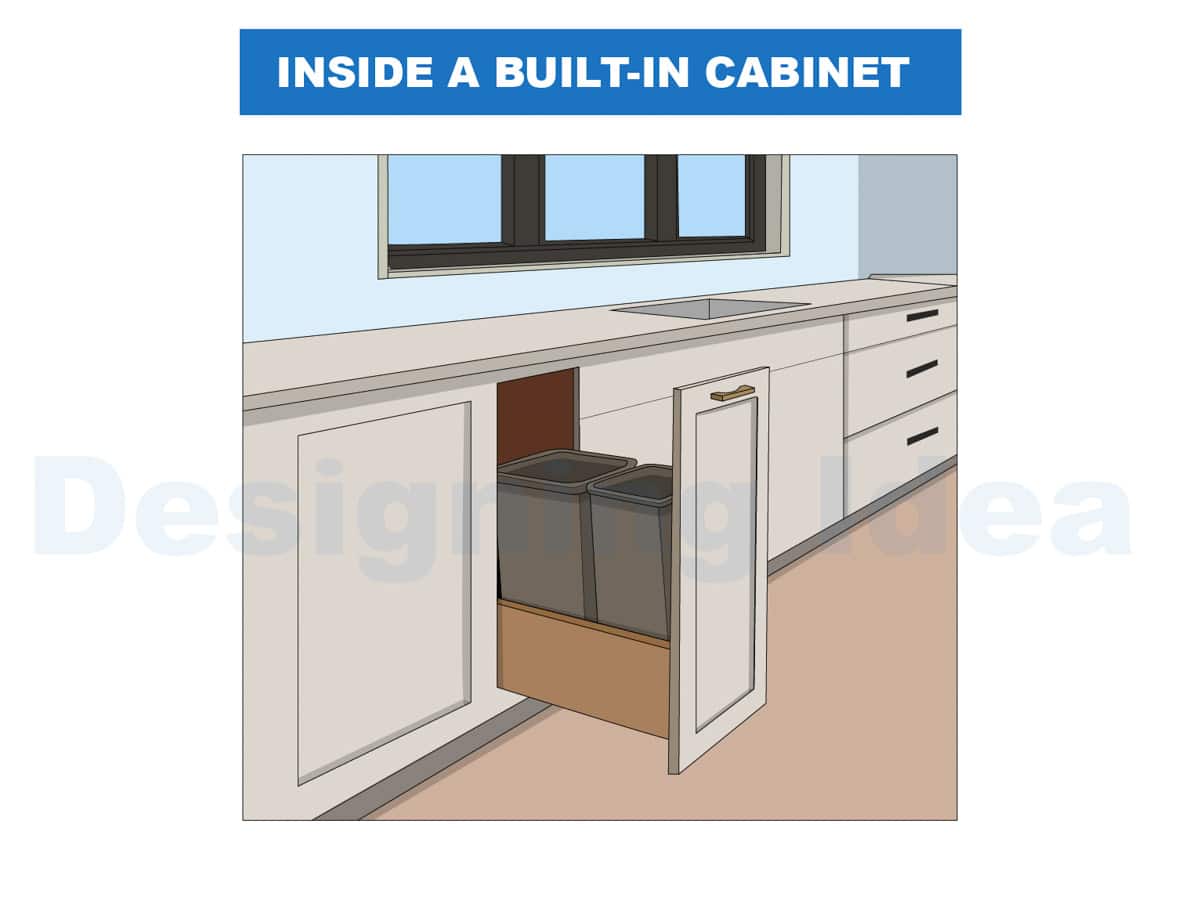
If you have a large kitchen, you can build a low-profile cabinet with a style that blends with your existing kitchen theme. Create divisions to encourage segregation.
Under the sink countertop
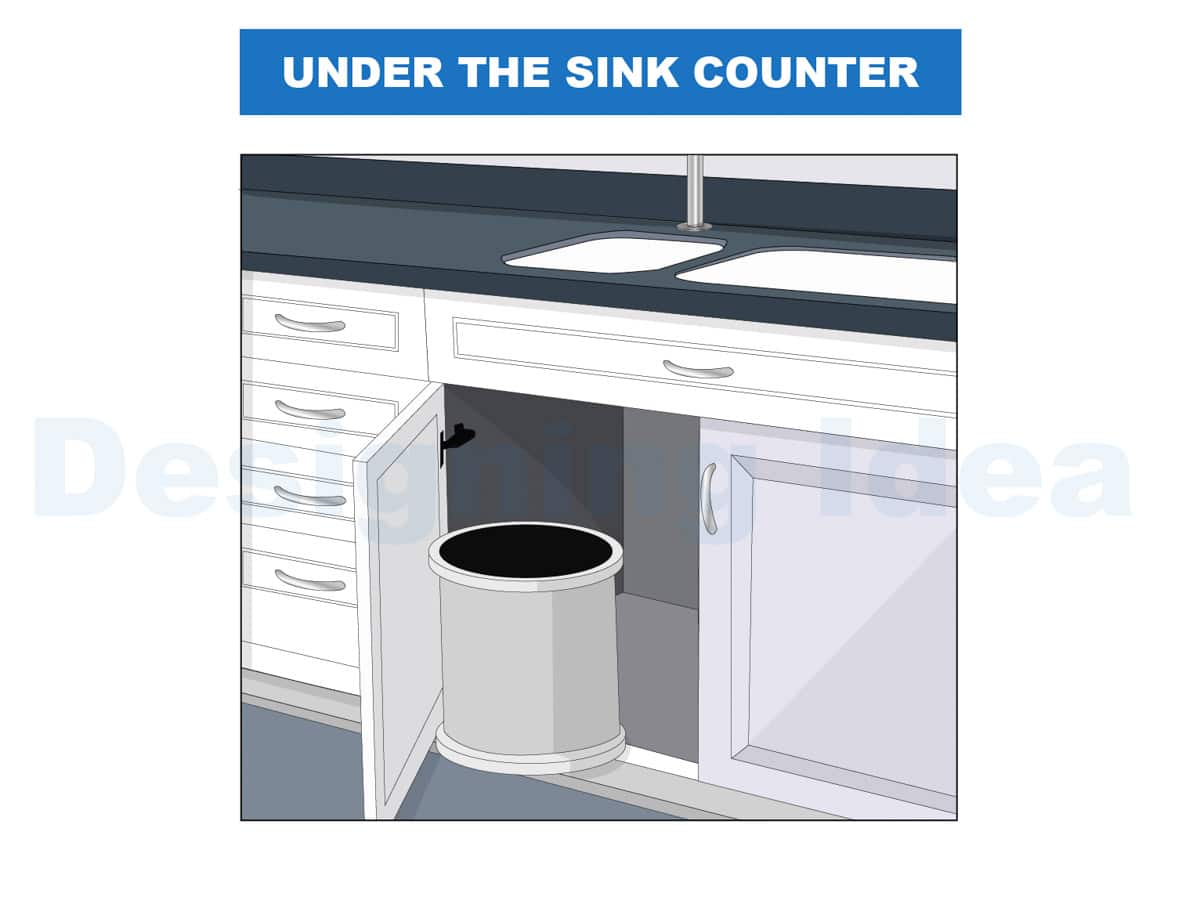
One of the most common areas to place your trash can is under the sink counter, which is accessible to the preparation area and hidden away from view.
In an odd or hard-to-reach cabinet corner
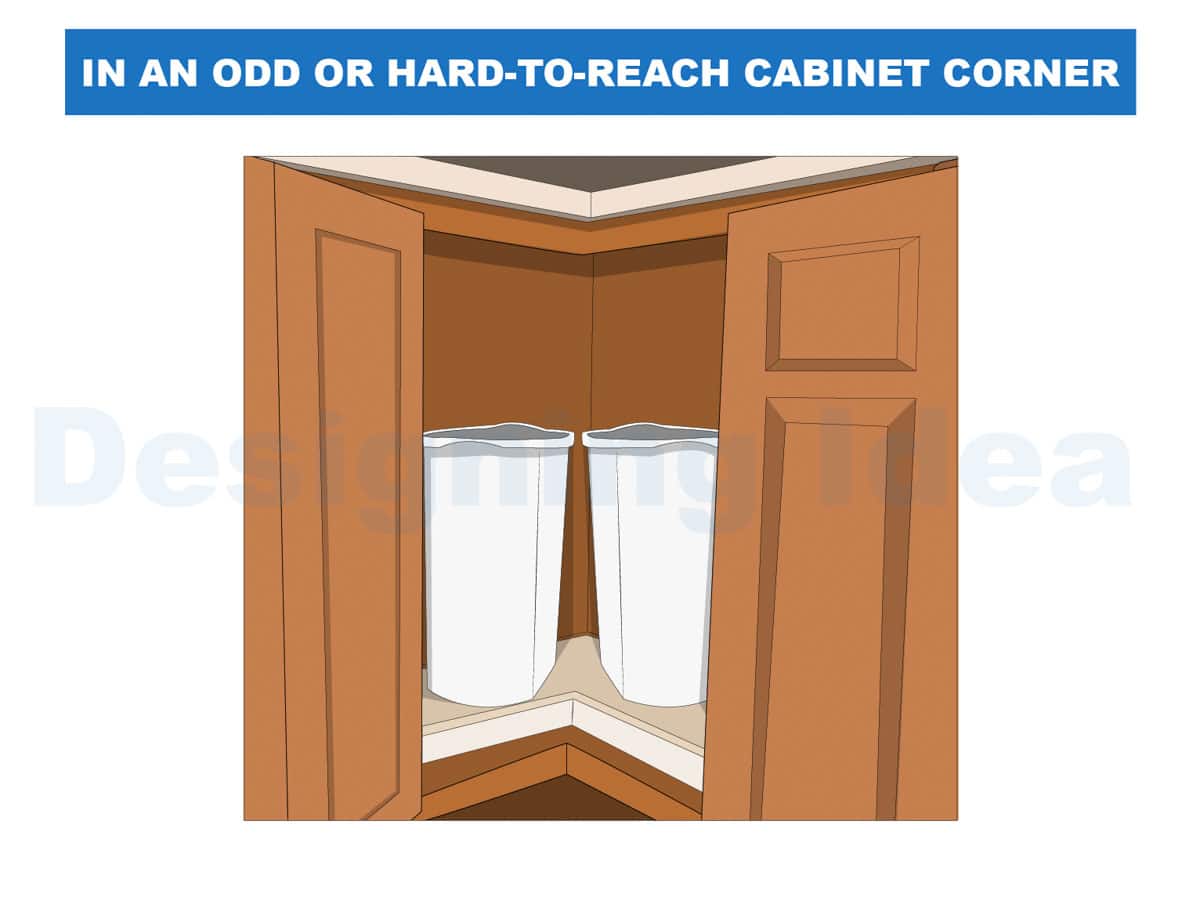
Corners or any other odd areas inside your base cabinets are perfect for a slide-out or pull-out trash bin that utilizes the available space.
In a utility room or pantry
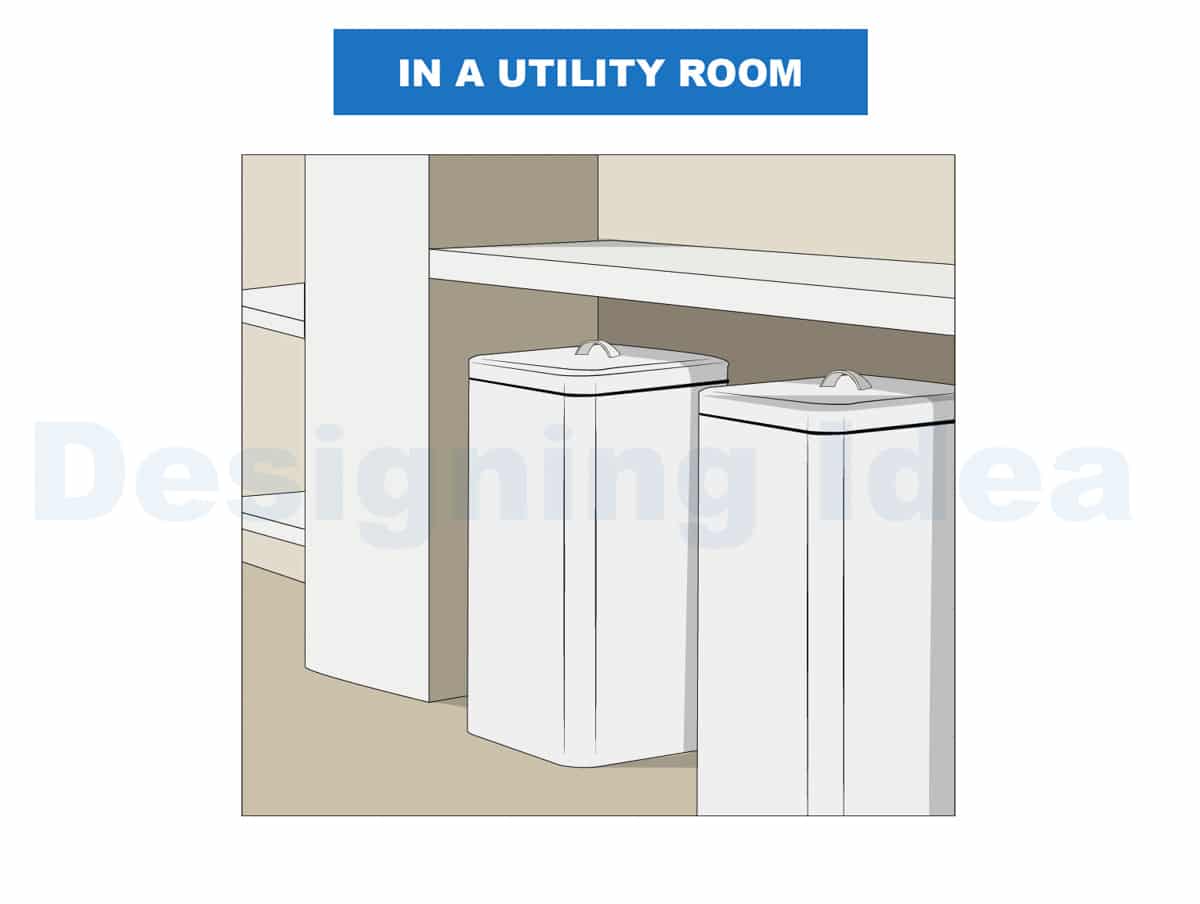
You may have a utility room that is near your kitchen area. If it is large enough, you can build a dedicated cabinet for your garbage bins.
Near a back door
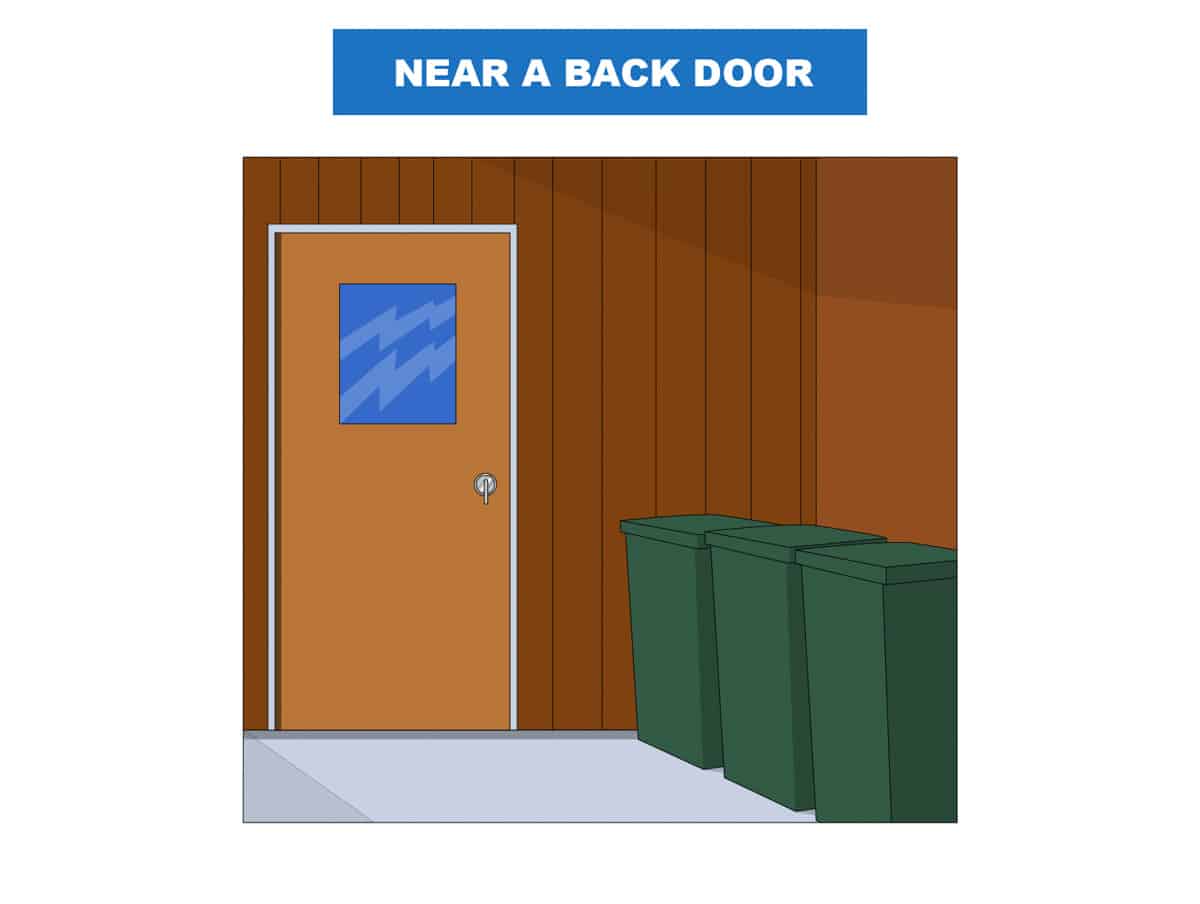
Under the kitchen island

At the end of the countertop
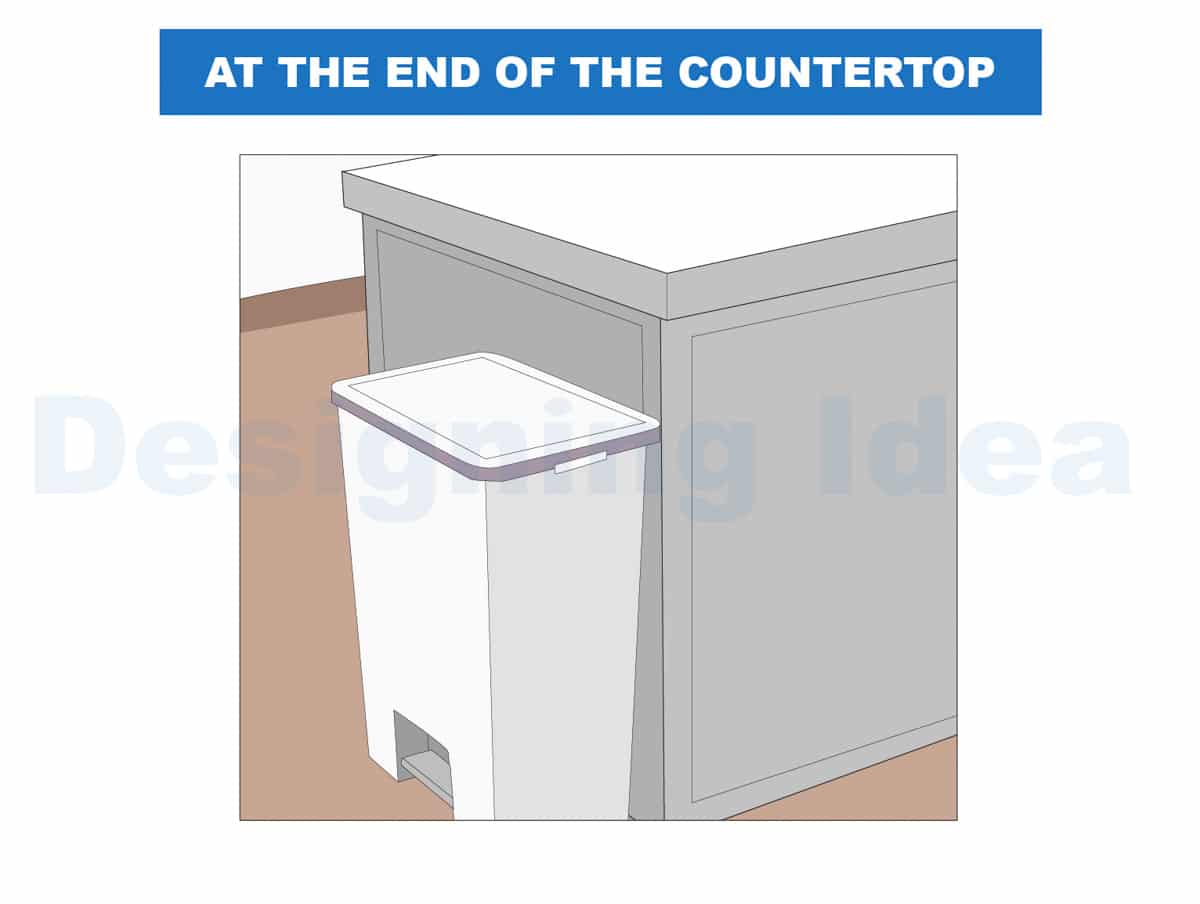
Near the cutting board chopping area
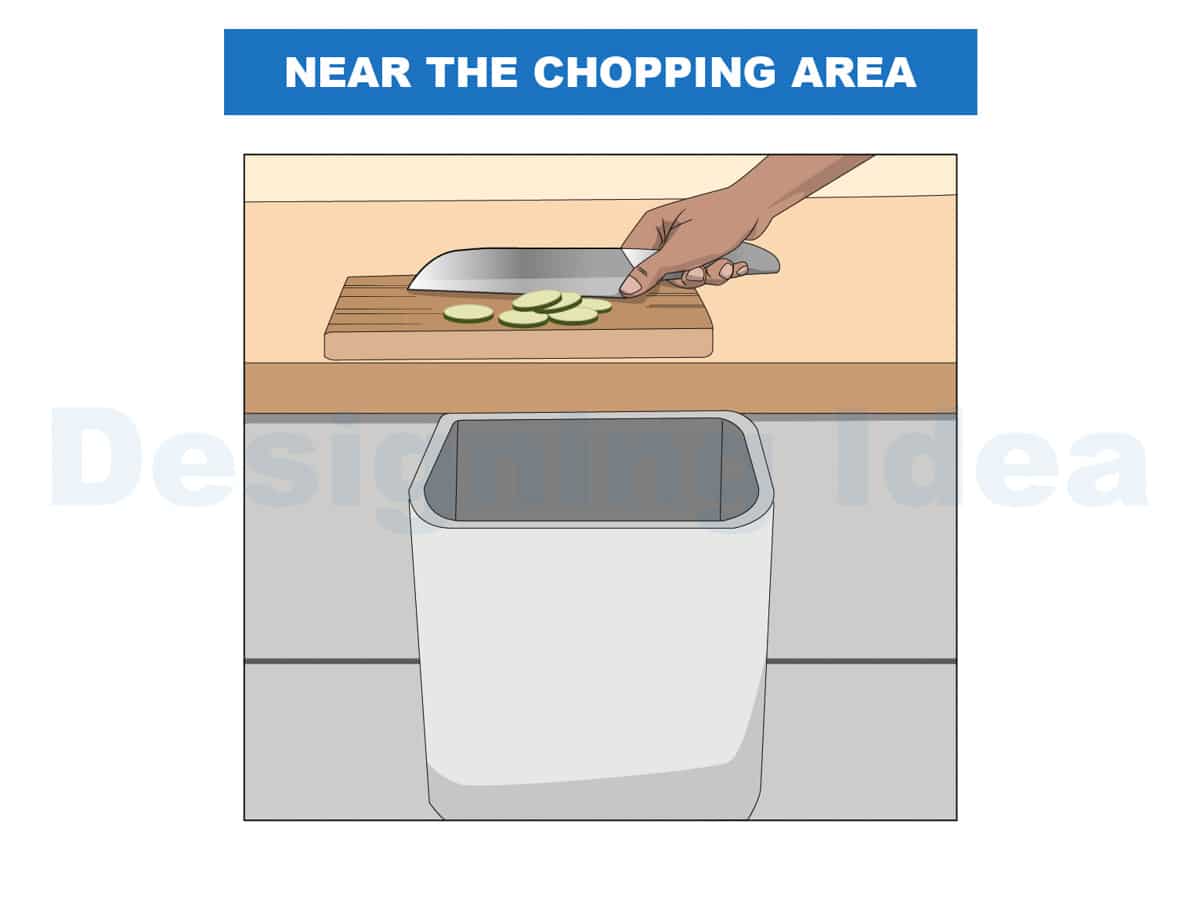
Behind a door
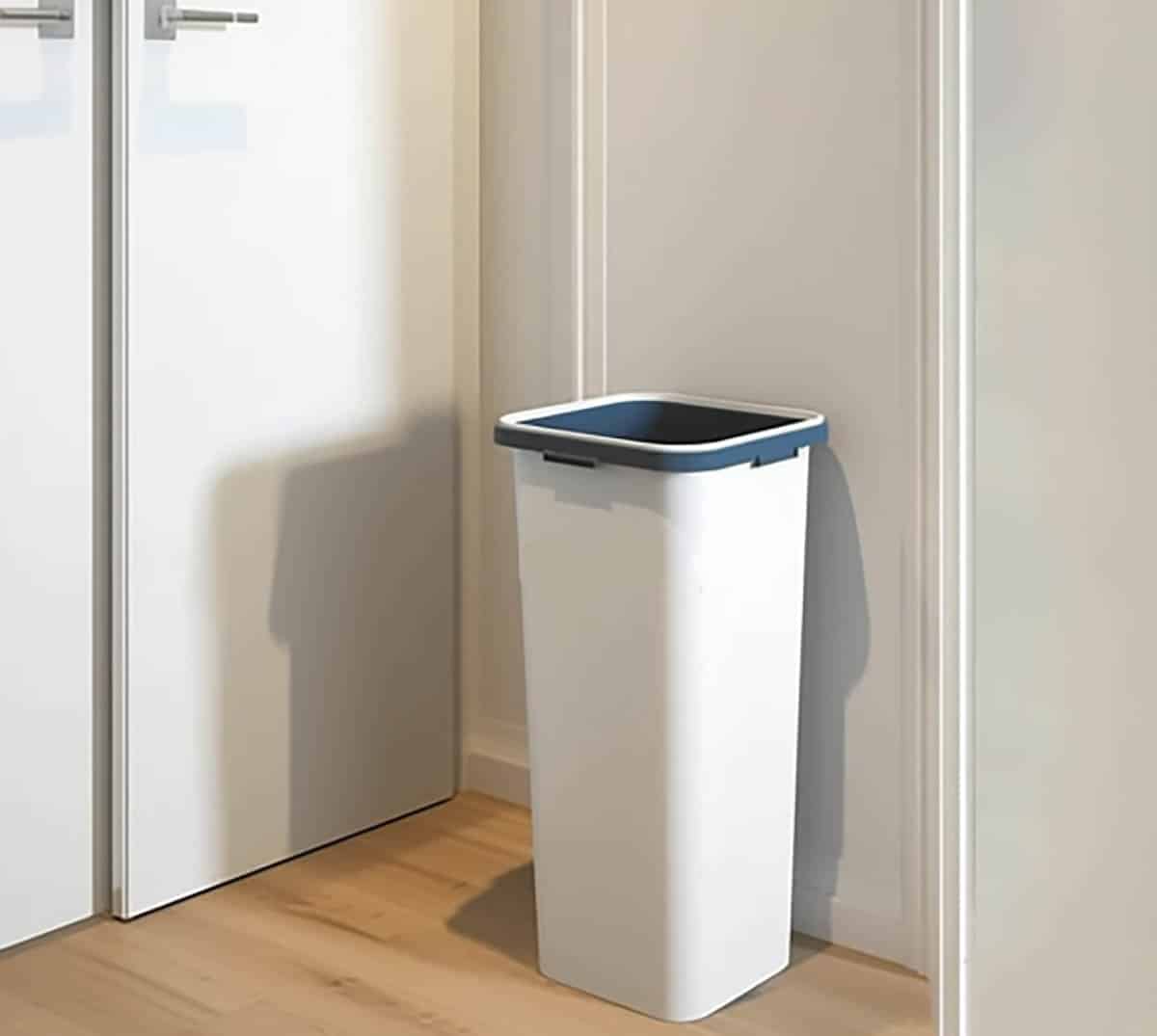
Adding a waste bin behind the door can be convenient, but it could also pose some problems. Many doorways will be partially blocked due to a bin positioned there. This situation would usually work best for those with double doors where only one is in use or by purchasing a narrow waste bin.
Garbage Can Placement Questions
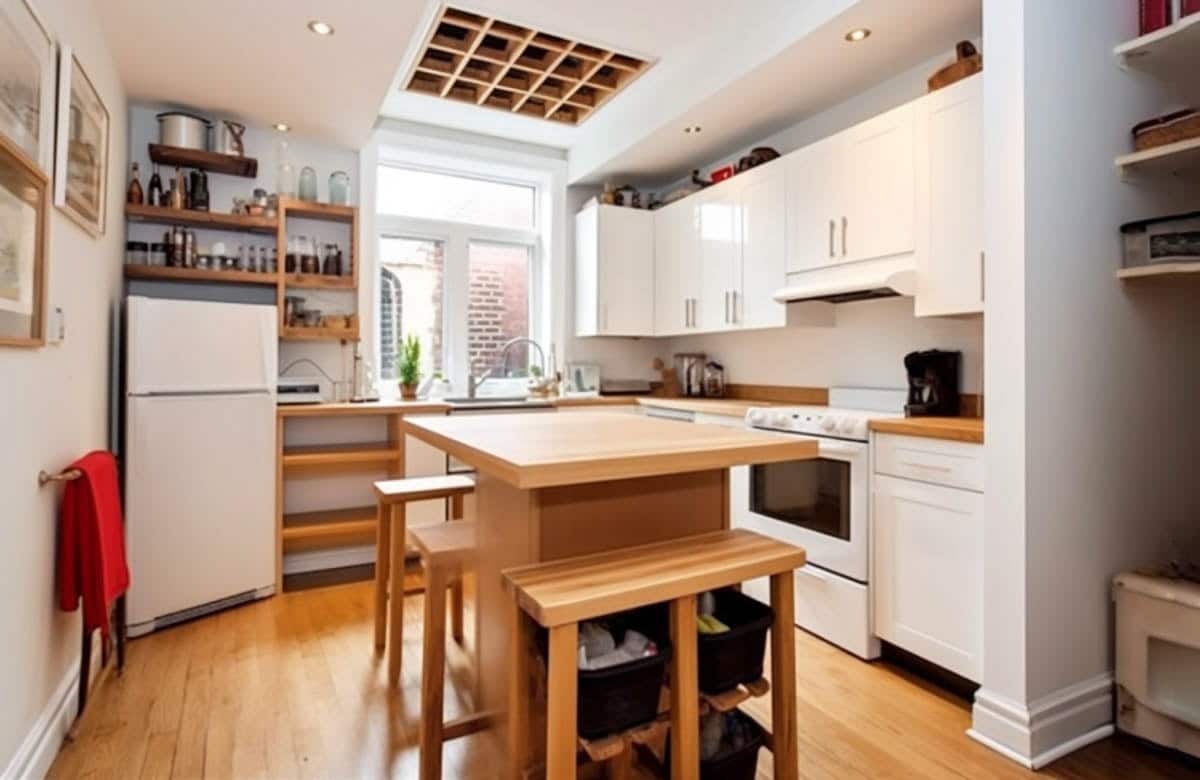
How much space do you have in your kitchen?
When you are living in a small 1-bedroom apartment or condominium, you will probably have a kitchen that’s around 70 to 100 square feet. This means every square foot of space you use is valuable, and a provision for a garbage bin should be well-planned to maintain an efficient yet hygienic workspace.
Utilize the space under your sink as a garbage area. It’s easy to throw peelings and other food waste on the countertop and keep the can hidden from view. However, this means you get a limited kitchen trash can size, so you may need to add a bin for dry or recyclable items that can be readily placed near the exit or utility area.
There are expandable trash bags that can be fastened on the side of a cabinet or countertop that are perfect for dry waste. For easy disposal, place a plastic bag over the expandable bag, and when full, easily slide out the bag when you’re ready to put out the garbage.
Average Trash Container Sizes Per Location
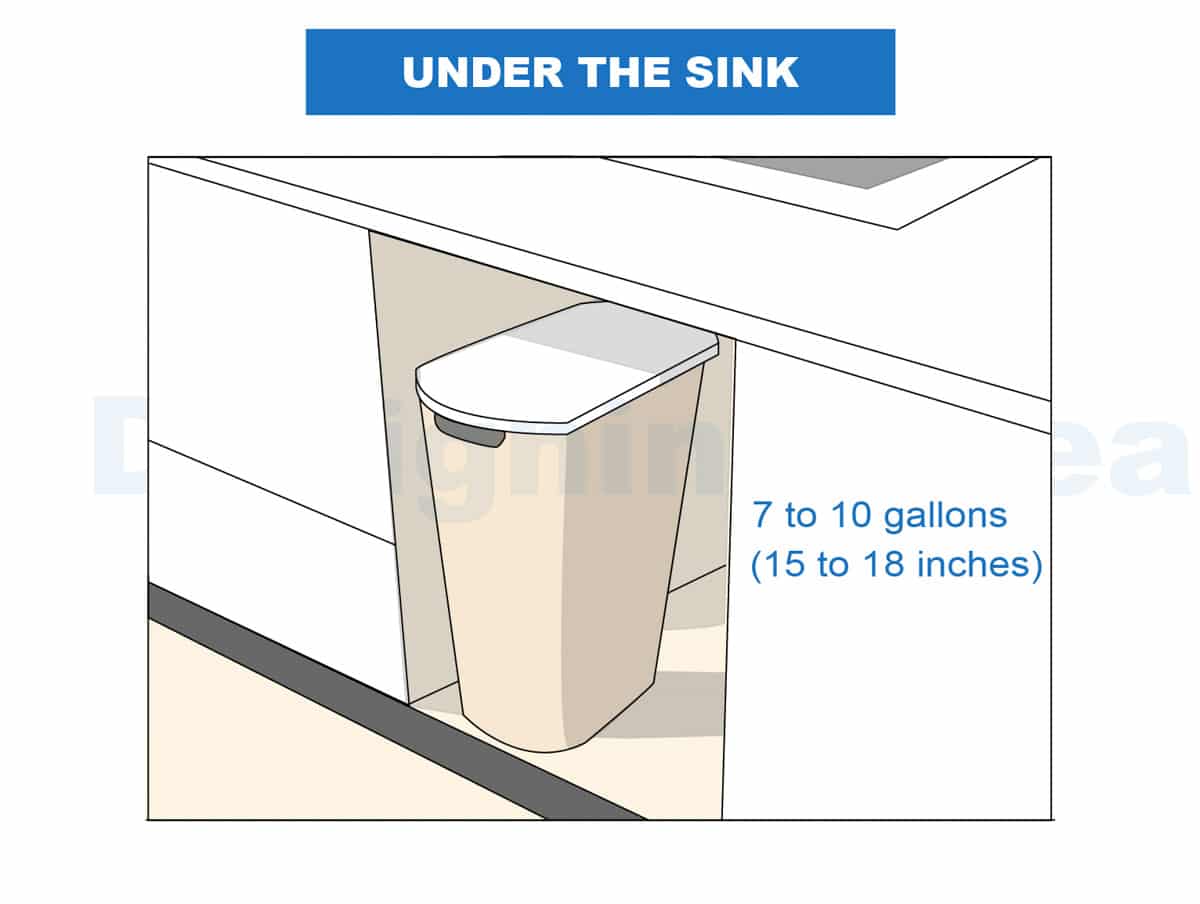
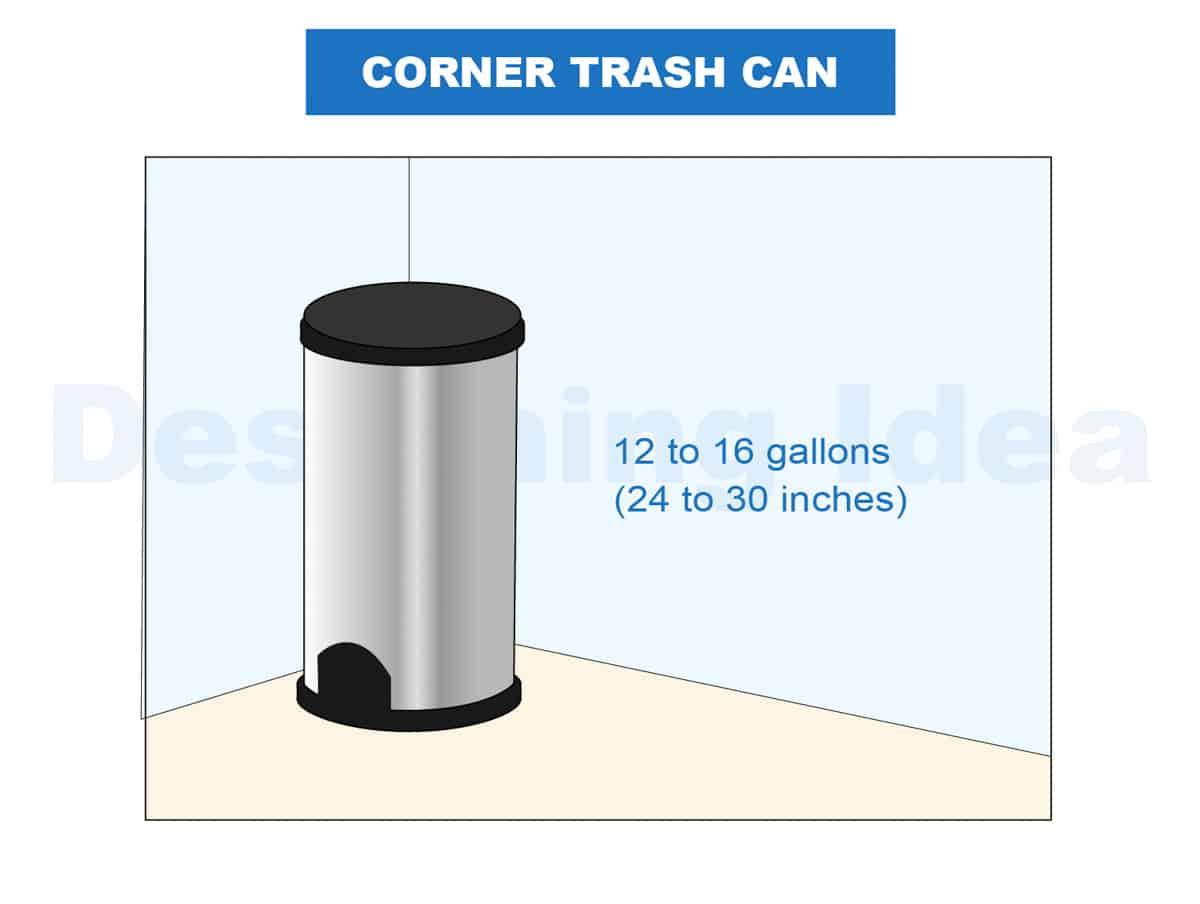
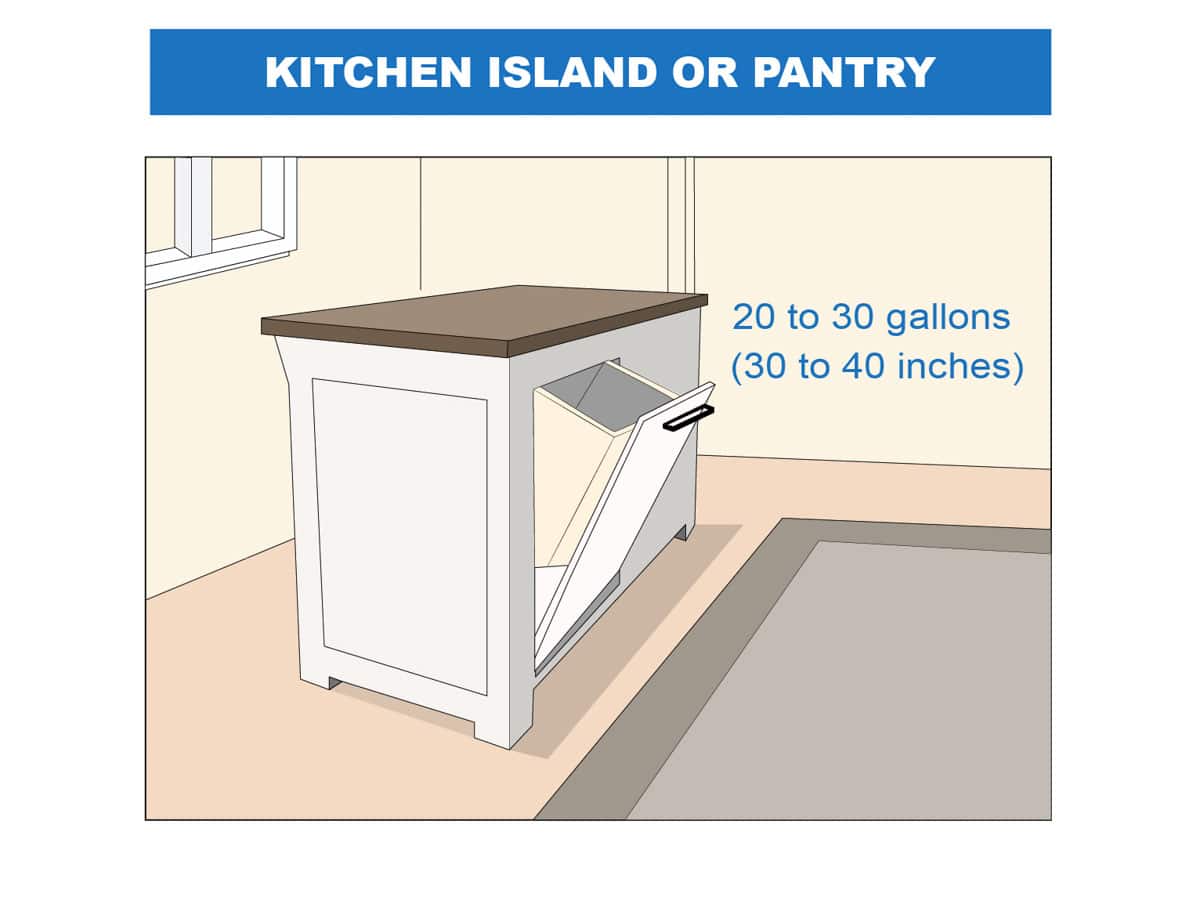
How many people use your kitchen regularly?
Based on the data from the EPA, the average person produces 4.40 waste pounds daily, that is, without the 1.51 pounds of recycled waste. So, in total, you’ll need to accommodate a total of 5.91 pounds of trash per person. Therefore, the more people living in your household, the more waste is generated, which means the larger the trash bin or the more trash bins you need.
Average waste bin size according to the number of users
• 2 persons: 7 to 10 gallons
• 4 persons: 12 to 16 gallons
• 6 persons: 20 to 30 gallons
How much trash do you generate daily?
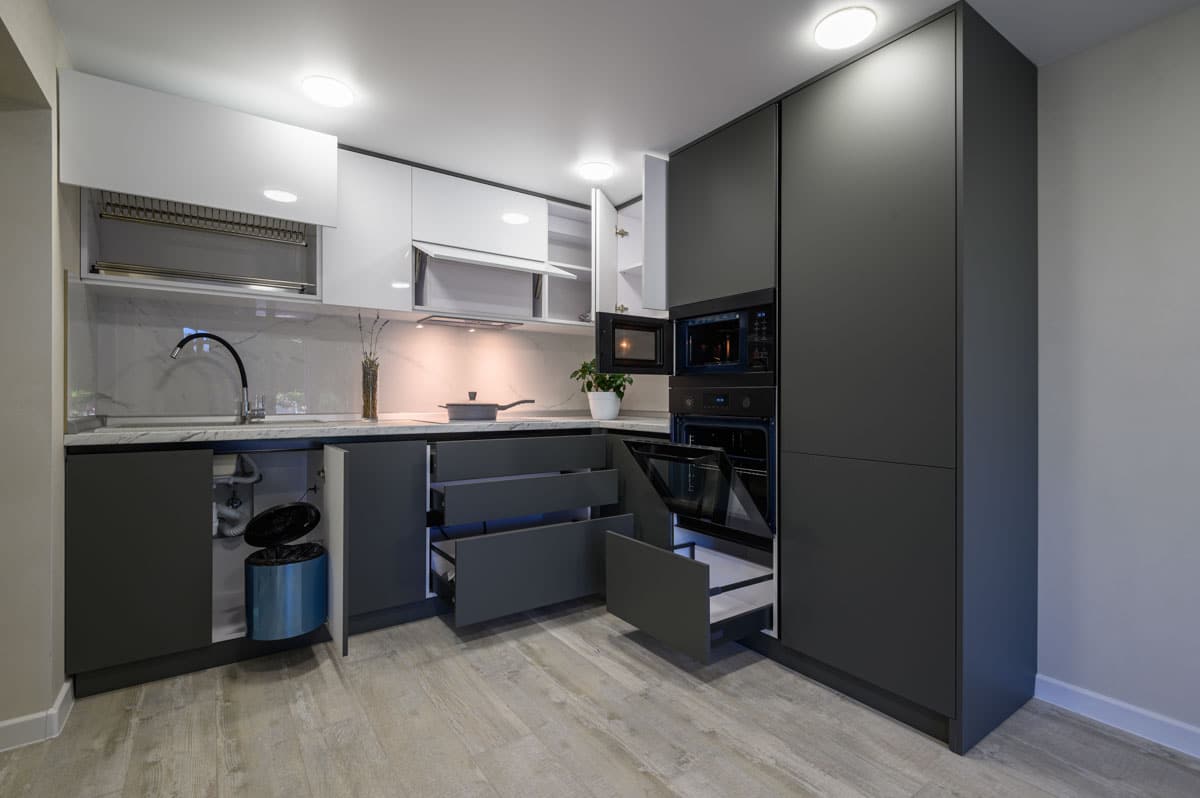
When finding the right size and type for your trash can, individual habits, such as what type of foods they eat, should also be considered. If your family does take out often during the week, you may want to invest in a large disposal bin that is mainly for food, dry garbage, and recyclables.
However, if most of your family members cook meals, you may want to consider composting bins or dedicating a large enough space for biodegradables. Other lifestyle factors include:
Having a garden: Planting in your backyard or having inside plants can encourage you to make compost. You don’t need large and complex bins to make compost, as there are commercial compost bins that can hold biodegradable organic waste and are secure enough to be placed inside a home.
While most houses don’t have dedicated recycling areas as part of their design, try to designate a place for sorting recyclable waste that is close to the kitchen, practical to store recycling unit collection, and easy to carry outside – Practical Self-sufficiency The Complete Guide to Sustainable Living Today, Dick Strawbridge, James Strawbridge
Efforts to recycle: If your household makes an effort to recycle food packaging, such as metal cans or cardboard boxes, this can influence the type and size of your container.
It also helps if you have a recycling collection near your home where your recyclables are collected for free or with a minimum charge. You may also find junkyards or recycling companies that buy specific items, such as aluminum cans or bottles.
Garbage collection schedule: The less waste you produce and the more often your garbage collector picks it up, the smaller your collection bin can be. However, you’ll need a backup space to place uncollected garbage if your waste collection company misses a schedule.
Would you like a trash container that is hidden or out in the open?

When you have pets at home, a hidden trash can might be a better option in your kitchen, and when properly sealed, it can lessen the access of insects or pests. It can also leave a tidier and cleaner look in the kitchen as opposed to having an exposed stand-alone waste bin.
Exposed Bins: Best for Medium- to Larger Kitchens
• It shows if it’s already time to dispose of a full trash can.
• When it’s time for disposal, you don’t need to open or take out the garbage can from a hidden compartment.
• Encourages you to separate items and keep the garbage area clean.
• Easily upgrade or change your bin when needed.
Hidden Bins: Best for Small Kitchens and Homes with Pets
• More visually pleasing and an opportunity to blend the garbage area with the surroundings, such as by using a similar cabinet design and finish.
• You don’t have to worry about pets or pests accessing your waste products.
• Seals off odor and is perceived as more hygienic in a kitchen space.
• Utilizes unused space, such as under the sink, or can be placed in odd corners of the kitchen.
Types of Garbage Cans for the Kitchen
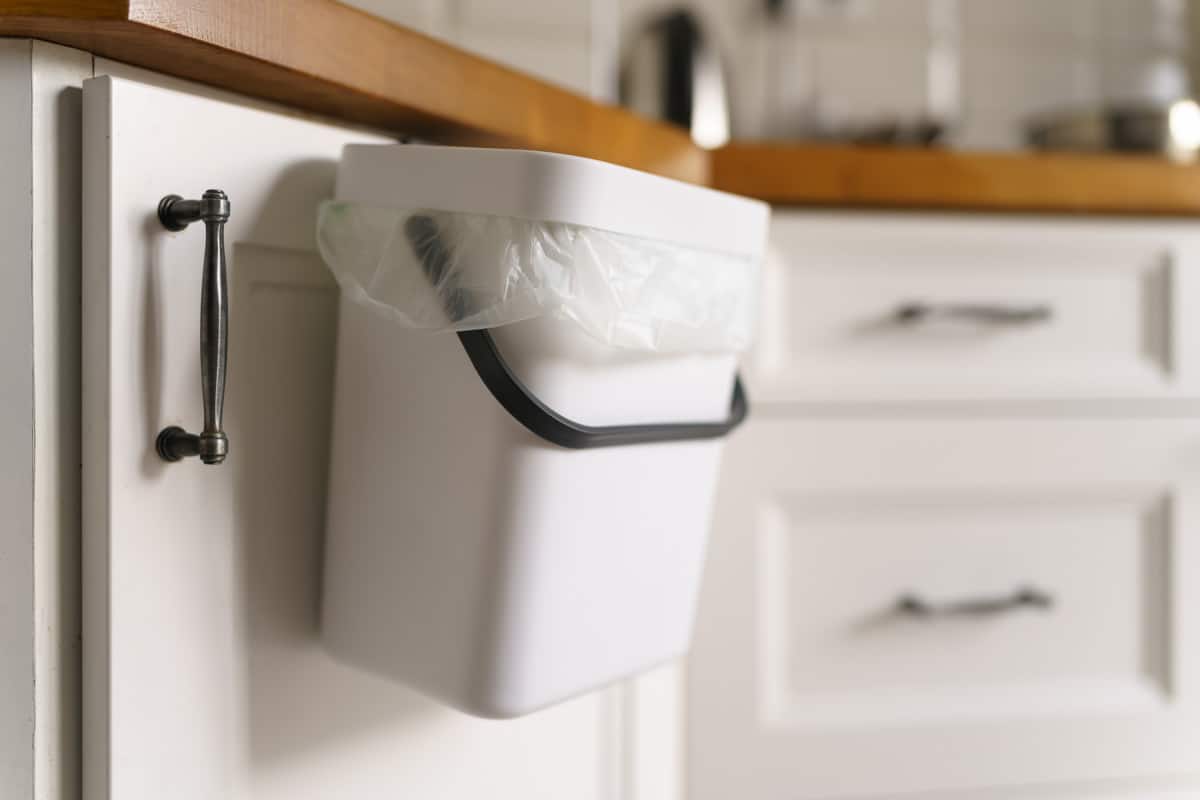
Trash cans for kitchens available on the market have significantly improved with added features in accessibility, odor control, aesthetics, maintenance, and hygiene.
Slide out bins

Stand-alone cans
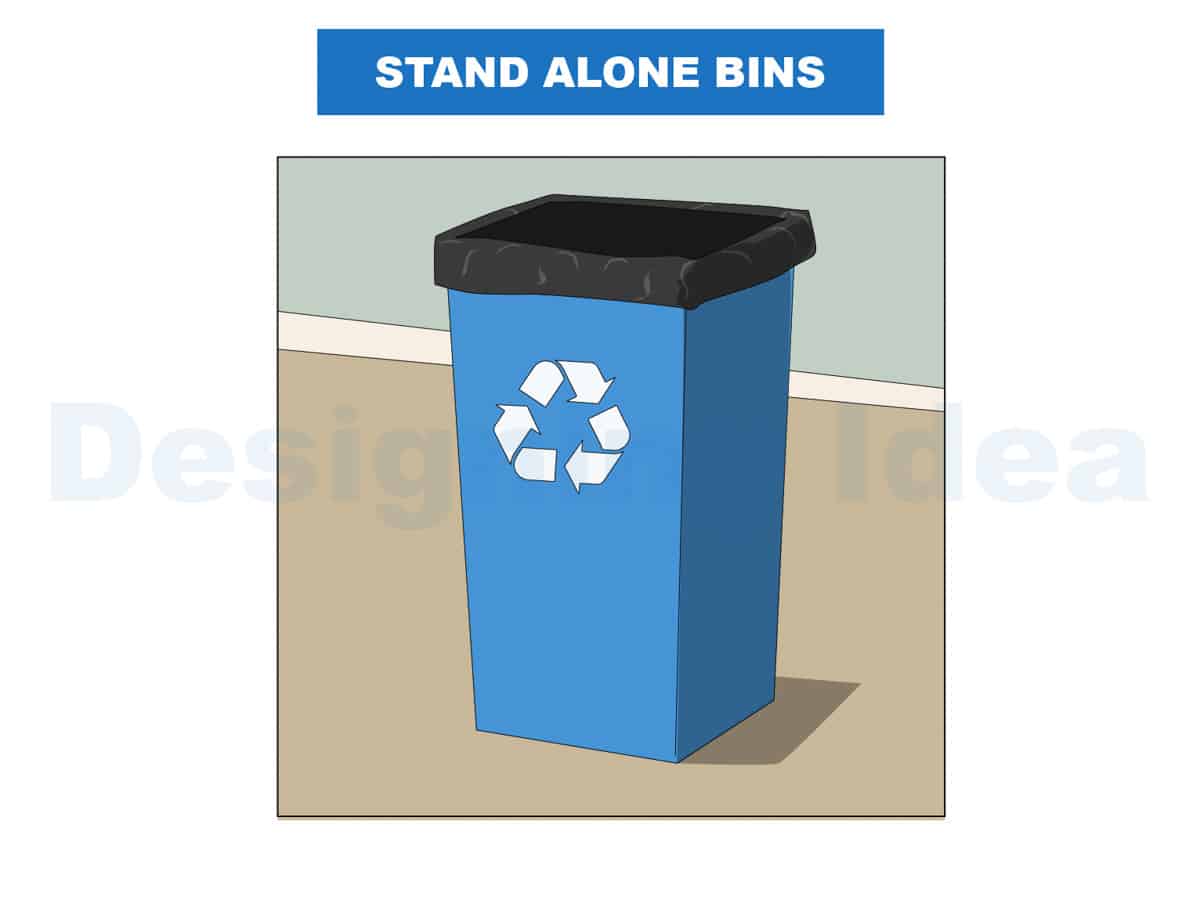
In addition, most stainless steel or metal bins are made to blend with the modern aesthetic. There are plastic options that are more lightweight and are also easily cleaned and installed in hidden compartments.
Motion-sensor waste cans:
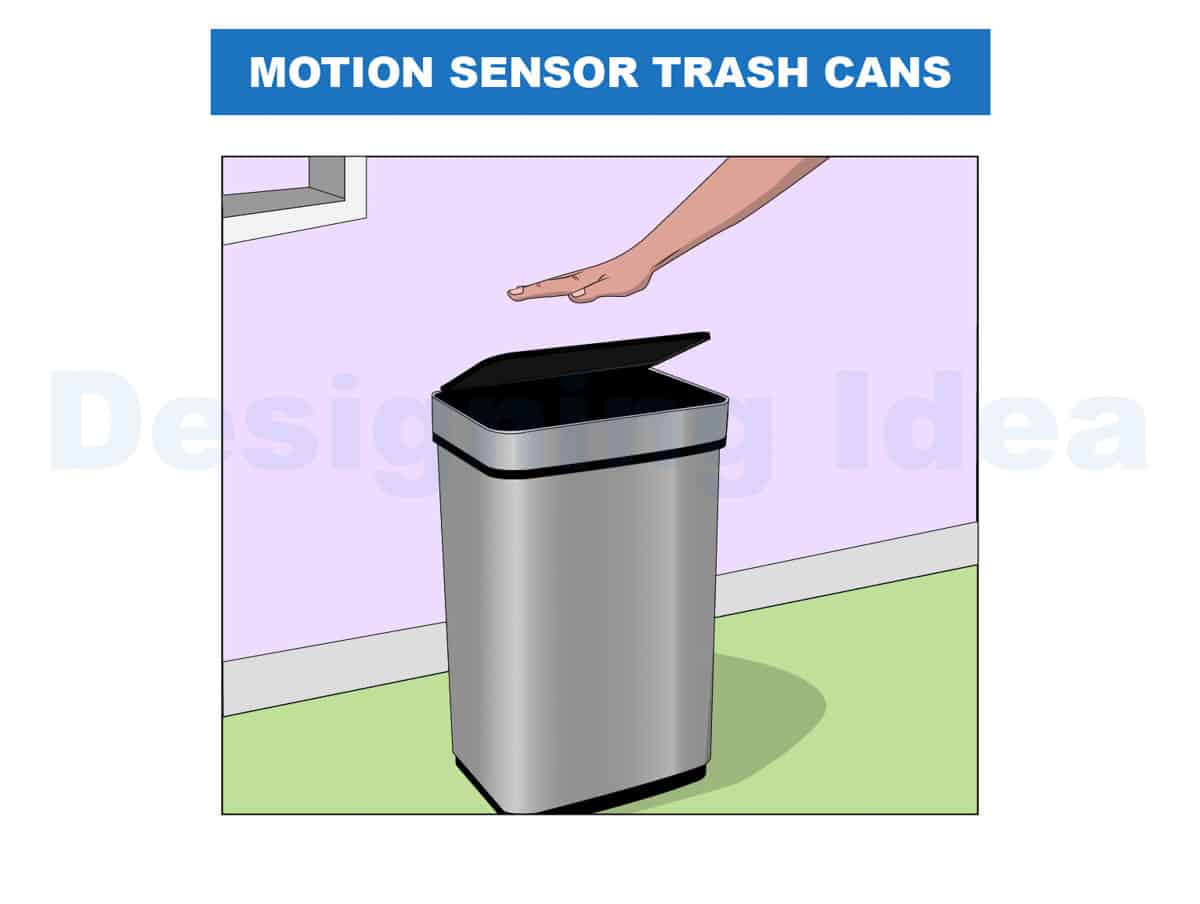
Swing-lid cans
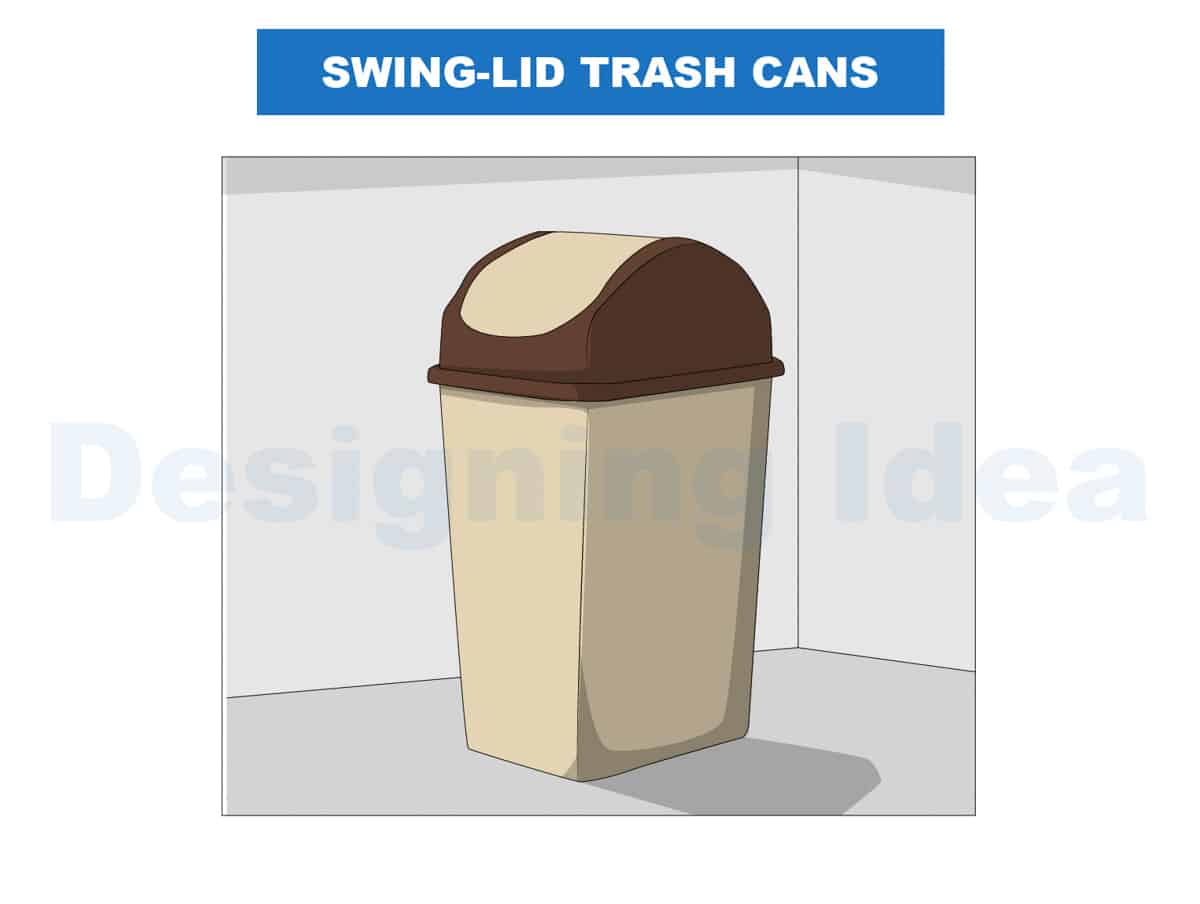
Indoor compost cans
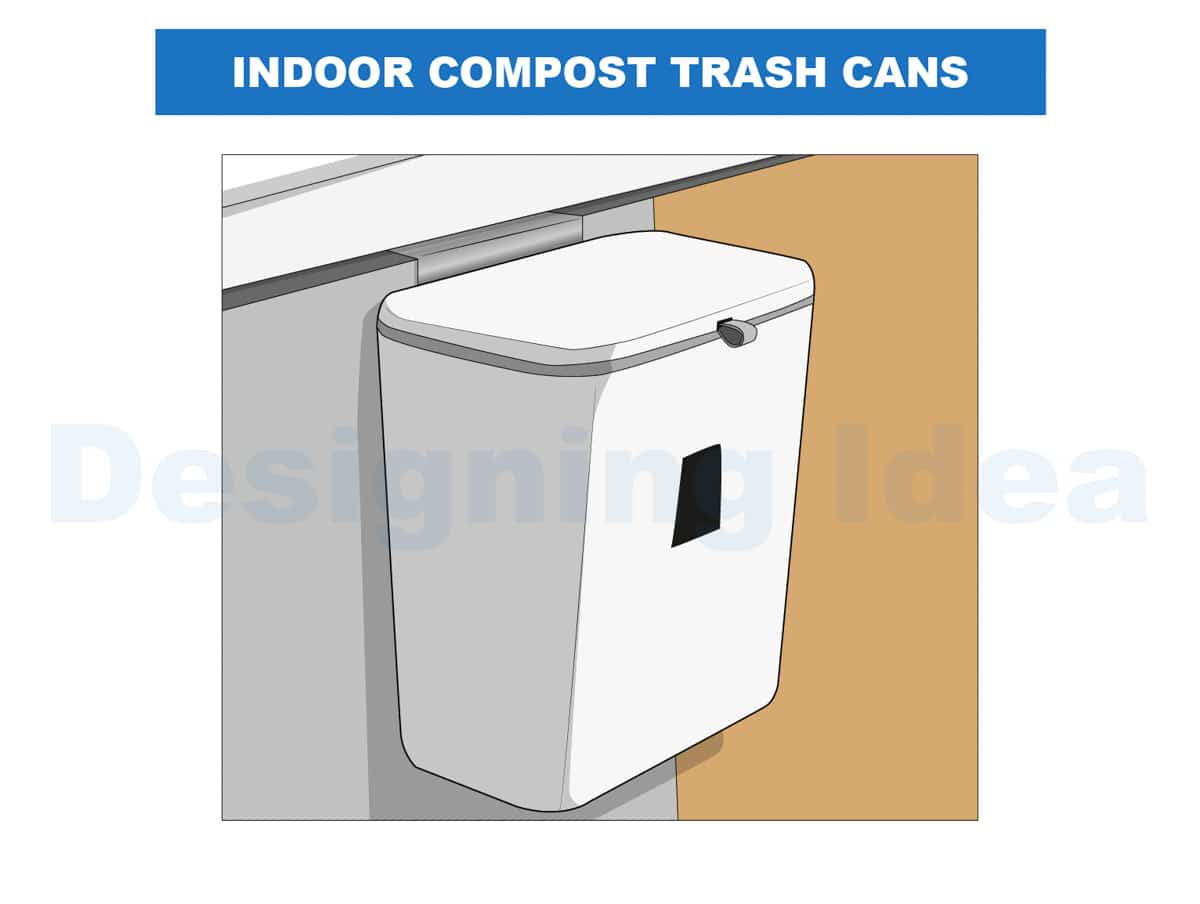
See more recommendations for kitchen waste cabinet solutions in our article about the different trash compactor pros and cons on this page.

